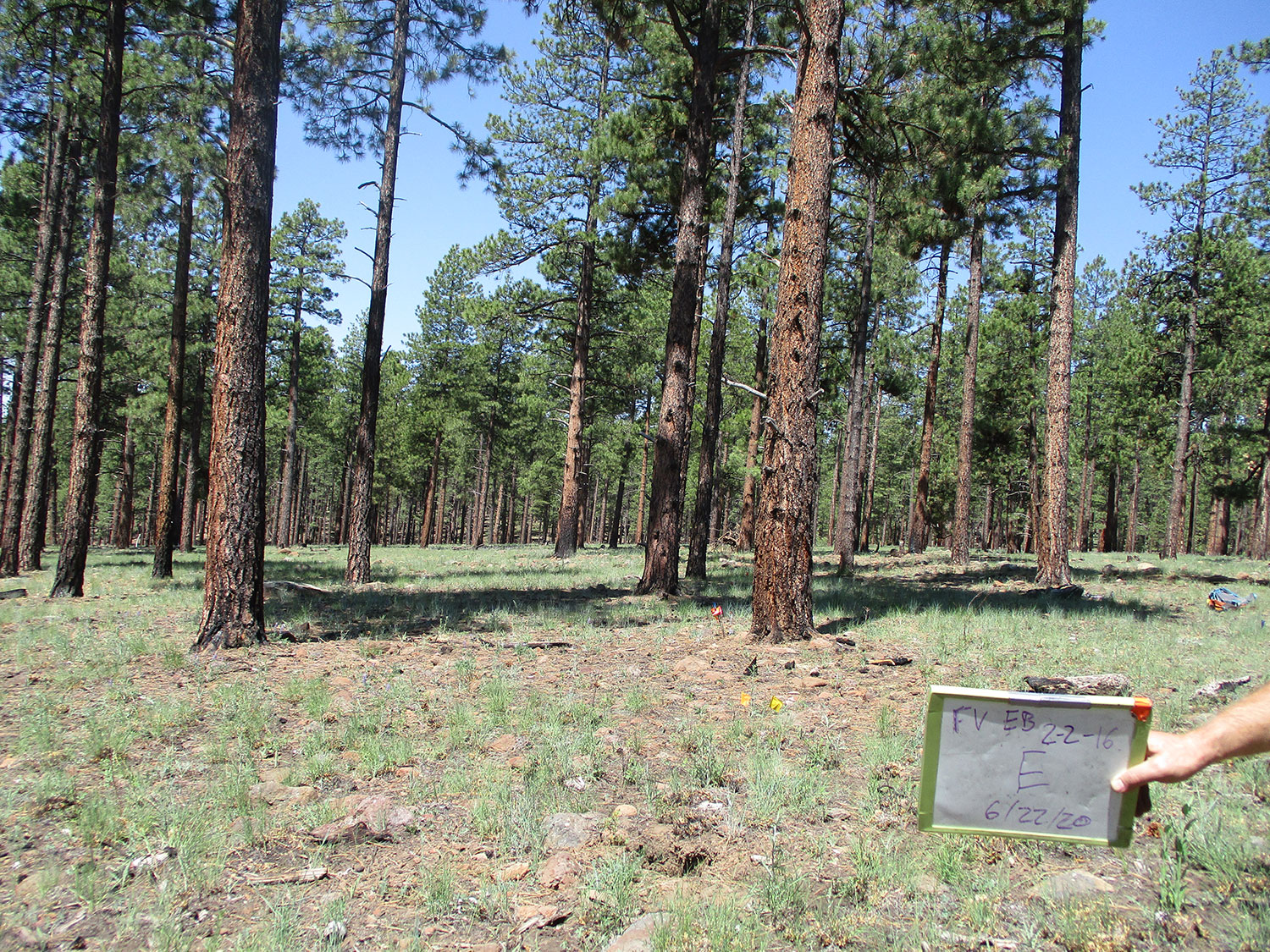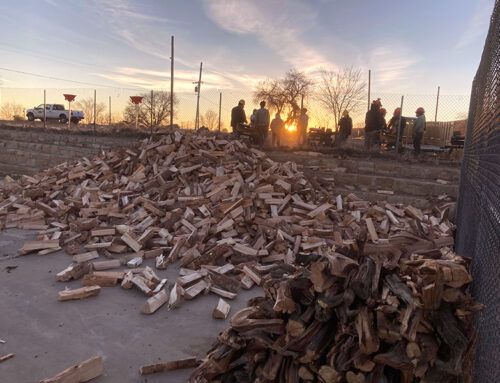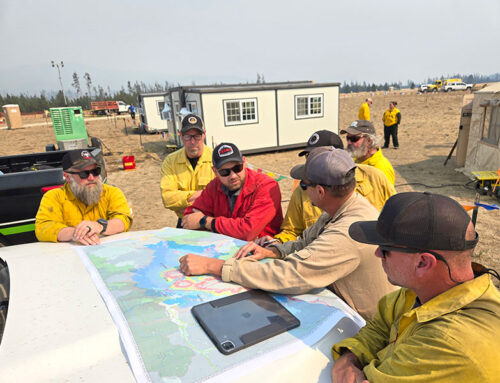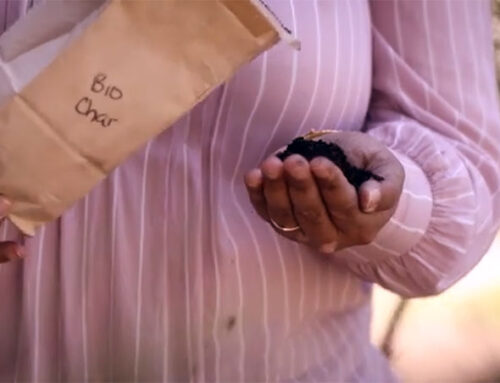In summer 2020, the ERI made substantial adjustments to our usual protocols and procedures to maintain crew safety and health as our first priority during the COVID-19 pandemic. After four weeks of postponement, which included two-weeks of virtual training for summer crews, we began field data collection in June at two local sites near Flagstaff.
Crews successfully conducted measurements of forest overstory structure, tree regeneration, hazardous fuels, and understory vegetation at one of ERI’s Long-term Ecological Assessment and Restoration Network (LEARN) sites in the ponderosa pine forests of the Fort Valley area, about 3 miles northwest of town. Tree thinning and prescribed burning treatments at the site were initiated in the late 1990s, and results from this monitoring will help forest managers better understand long-term ecological responses and their interactions under changing climatic conditions.
ERI crews also conducted measurements of forest changes resulting from the 2019 Museum Fire in the Dry Lake Hills area of the Flagstaff Watershed Protection Project. This work represents a collaboration between the ERI, City of Flagstaff, US Forest Service, and Fish and Wildlife Service. Results from the monitoring will help describe fire effects on Mexican spotted owl habitat and influences of the fuel reduction treatments on fire behavior.
After more practice and better understanding of COVID-19 safety protocols, ERI crews deployed to more distant research sites to finish out the season. Other field studies included a multi-site investigation of understory responses to restoration treatments, analysis of recent climate impacts on transitional forests below the Mogollon Rim, and two studies funded by Salt River Project to test advanced techniques for monitoring mixed-conifer forest structure and changes.




